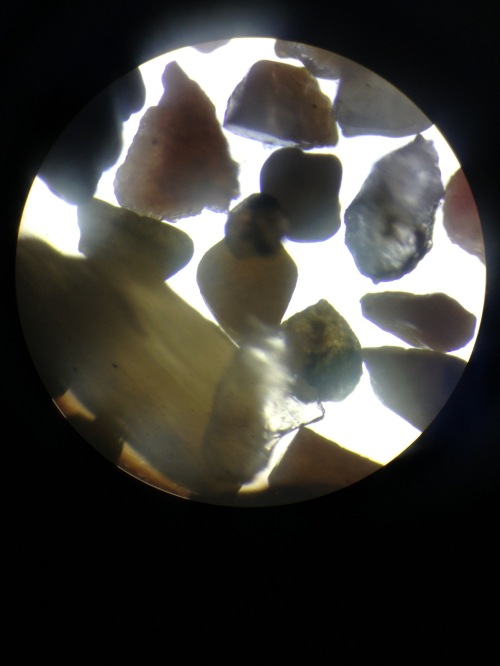 In class we have observed many different sands from different beaches all over the world. Usually when people observe sand they never describe and draw it in good detail. They just draw it in little blobs of rocks that show no detail, which is wrong. Sand actually has alot of detail and each little pebble is different from all others. Each beach has different sands and the characteristics of each are different.
In class we have observed many different sands from different beaches all over the world. Usually when people observe sand they never describe and draw it in good detail. They just draw it in little blobs of rocks that show no detail, which is wrong. Sand actually has alot of detail and each little pebble is different from all others. Each beach has different sands and the characteristics of each are different.
Sand can be placed into different group by shape,size,color,texture and sorting. But before identifying which group sand can be placed in, you have to observe it and draw little samples. In some of the sand there are little particles from organisms that are decomposed in the sand. Some pieces of sand are large and some can be miniscule. One may be able to see detail without at microscope, but to get great detail it is useful to use a microscope. To compare sand you should compare the size, color, shape,texture and sorting.
After you observe and draw out in great detail of the sand you can now compare it in a chart. You measure the size of the sand with the Wentworth Scale. In class we used graph paper and seperated the island sands into certain groups by there size. Then we looked at the shapes of the pebbles and see if they could be resembled by the specific shape groups. The texture of the pebbles was next and we categorized them in groups too see if they were smooth,rough,and coarse.
Some beaches that we studyed were the Bahamas,Grand Isle LA, Mt. Desert Beach in Maine, Virgin Gorda, and The Key West. I never knew until now that sand could be so unigue in many different ways. Each has there own characteristics and they are all very different from eachother. I did not go on the field trip but I know that you guys looked at the sand on Plumb Island that is purple. I thought this activity was very interseting and I learned a lot of new things about the sand.
Read Full Post »










